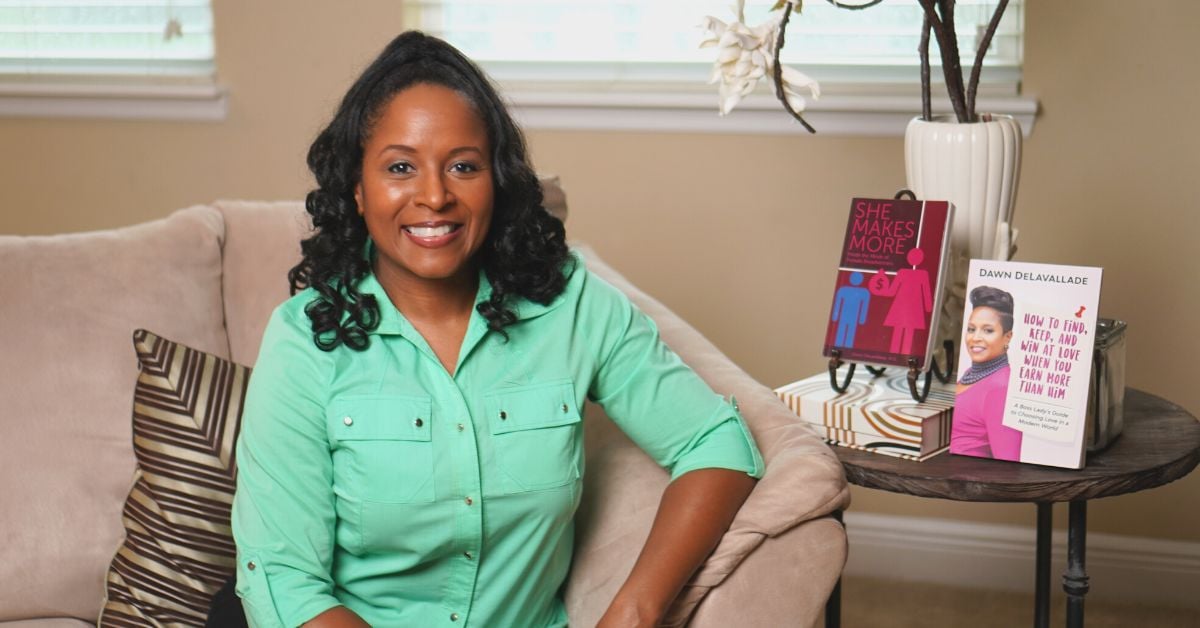What vRad’s Sale Will Mean for Radiologists and Clients
Our practice is for sale. And frankly, I’m pretty excited about it. Based on past experiences, the sale of vRad bodes well for the future of our...

Remote radiologist jobs with flexible schedules, equitable pay, and the most advanced reading platform. Discover teleradiology at vRad.

Radiologist well-being matters. Explore how vRad takes action to prevent burnout with expert-led, confidential support through our partnership with VITAL WorkLife. Helping radiologists thrive.

Visit the vRad Blog for radiologist experiences at vRad, career resources, and more.

vRad provides radiology residents and fellows free radiology education resources for ABR boards, noon lectures, and CME.

Teleradiology services leader since 2001. See how vRad AI is helping deliver faster, higher-quality care for 50,000+ critical patients each year.

Subspecialist care for the women in your community. 48-hour screenings. 1-hour diagnostics. Comprehensive compliance and inspection support.

vRad’s stroke protocol auto-assigns stroke cases to the top of all available radiologists’ worklists, with requirements to be read next.

vRad’s unique teleradiology workflow for trauma studies delivers consistently fast turnaround times—even during periods of high volume.

vRad’s Operations Center is the central hub that ensures imaging studies and communications are handled efficiently and swiftly.

vRad is delivering faster radiology turnaround times for 40,000+ critical patients annually, using four unique strategies, including AI.
.jpg?width=1024&height=576&name=vRad-High-Quality-Patient-Care-1024x576%20(1).jpg)
vRad is developing and using AI to improve radiology quality assurance and reduce medical malpractice risk.

Now you can power your practice with the same fully integrated technology and support ecosystem we use. The vRad Platform.

Since developing and launching our first model in 2015, vRad has been at the forefront of AI in radiology.

Since 2010, vRad Radiology Education has provided high-quality radiology CME. Open to all radiologists, these 15-minute online modules are a convenient way to stay up to date on practical radiology topics.

Join vRad’s annual spring CME conference featuring top speakers and practical radiology topics.

vRad provides radiology residents and fellows free radiology education resources for ABR boards, noon lectures, and CME.

Academically oriented radiologists love practicing at vRad too. Check out the research published by vRad radiologists and team members.

Learn how vRad revolutionized radiology and has been at the forefront of innovation since 2001.

%20(2).jpg?width=1008&height=755&name=Copy%20of%20Mega%20Nav%20Images%202025%20(1008%20x%20755%20px)%20(2).jpg)

Visit the vRad blog for radiologist experiences at vRad, career resources, and more.


Explore our practice’s reading platform, breast imaging program, AI, and more. Plus, hear from vRad radiologists about what it’s like to practice at vRad.

Ready to be part of something meaningful? Explore team member careers at vRad.
6 min read
 Scott Baginski, MD
:
May 2, 2022
Scott Baginski, MD
:
May 2, 2022
-1.png)
More than two years after the onset of the pandemic, changes in COVID-related policies and postures — as well as accompanying cultural shifts in the workplace — continue to drive trends in the job market for radiologists. In 2022, things look markedly different than during the early stages of the pandemic and it’s clear that radiologist job seekers now have many options and greater workplace flexibility.
In my role as Medical Director for vRad, I work very closely with our physician recruiters. Between us we interview hundreds of radiologists every year as they explore options for their next career move. This experience along with the other datapoints available from serving 2,100 imaging facilities and radiology groups nationwide give us unique insights into the radiologist job market nationally.
With the numbers in radiologists' favor, we’re seeing some other noteworthy trends: higher compensation for experienced radiologists, an uptick in retirements, and increasing demand among radiologists for more flexible, remote-friendly working options, among others.
Here, we’ll further explore the current state of the radiologist job market and look ahead to what we can reasonably expect to see in the future.
To understand today’s job market, it’s useful to look at national imaging volume levels coming out of the pandemic. In January 2021, Emergency Department visits remained below pre-pandemic levels according to the CDC. By mid-March however, ED imaging volume here at vRad was surging past our pre-pandemic baseline. In the same timeframe, stories were appearing from places around the U.S. like Oregon and Minnesota reporting a similar increase in ED traffic. Throughout the summer, imaging volume continued climbing to new highs relative to our 20 years of tracking radiology data.
Many radiology groups struggled to keep up with the sudden increase in volume and while a COVID-related bounce is largely responsible for propping up the short-term numbers, long-term trends make it clear that these higher volumes are likely the new normal.
Projections of severe physician shortages have been well publicized and the Association of American Medical Colleges (AAMC) is forecasting a 42.4% growth in the population of Medicare beneficiaries by 2034. Providers are bracing for a shortage of specialists whose work often deals with older patients. A similar story has already played out in England.
We're also starting to see signs of a possible uptick in retirements. Between 2014 and 2018, vRad’s attrition rate due to retirement was about 1% but in recent years that has risen to 2-3%. With 500 radiologists in our practice, we view those numbers as suggestive of a national trend.
Leading physician staffing company Merritt Hawkins notes in its 2021 Review of Physician and Advanced Recruiting Practitioner Incentives that radiology now ranks as the third-most requested specialty, preceded only by nurse practitioners and family medicine physicians. This report represents the height of the pandemic, from April 1, 2020 to March 31, 2021, at a time when imaging volumes were still low — and even then, radiologists were in high demand.
That demand continues to increase. 2021 was a record year for job postings on the American College of Radiology (ACR) job board. The graph below visualizes that increase, with the number of new job postings dramatically rising throughout the year (see figure 1.1).
Figure 1.1
New Radiology Job Postings
ACR Job Board, By Quarter

Source: vRad analysis of ACR job board data, 2019-2022
These observations and trends lead us to believe that radiologists will continue to be in high demand (which is why we’re hiring!).
It's no surprise that with strong demand for radiologists, compensation increases have followed. That includes high offers for new radiologists (radiologists earn the fifth highest starting salaries of all specialties) and signing bonuses of $10,000 to $50,000 according to the Merritt Hawkins report. Radiologists are also receiving “stay bonuses” and pay increases from their current employers in an effort to increase retention.
Our own practice is no exception: In October 2021, vRad announced increases in compensation for the fourth consecutive year. The increases — up to 25% — took effect this past January.
The report also suggests that experienced radiologists seem to have gained the most from the hot job market. On the “high” end of radiologist salaries, their wages jumped from an expected $577,000 to $825,000 — and that doesn’t include benefits. The year held less cause for celebration among radiologists in the “low” and “average” compensation categories, which actually saw a slight decrease in salaries between 2019-2020 and 2020-2021.
While it’s fair to say that wages are quite high and so is competition for talent, it’s also important not to hyperbolize the generally upward salary trends in the field. Many providers will be wary of extreme changes that could permanently skew expectations or start competitive “bidding wars” for talent. Our internal review of 200 ACR job postings in January 2022 showed that only 11% of jobs were indeed offering the industry-hyped signing bonuses — but 89% were not.
It’s also important for radiologists looking to change jobs to put higher compensation into context. Interestingly — although perhaps not surprisingly — we find higher average compensation in geographic regions (see figure 1.2) where the rise in the number of Medicare beneficiaries outpaces the number of radiologists. In other words, more money often means more work and more stress. This is most pronounced in the western U.S., which has both the highest salaries as well as the largest disconnect between new patients entering the Medicare system and new radiologists entering the field.
Figure 1.2
Radiologist Compensation by Region

Source: 2020 Review of Physician and Advanced Practitioner Recruiting Incentives and the Impact of COVID-19
While some job-seekers may be eager to seek out higher-paying positions no matter how difficult the working conditions may be, others are looking for something different: a better quality of life. During the pandemic, as the U.S. workforce shifted to accommodate more flexible working arrangements and more remote work, radiology was no exception. Radiologists, including those who usually work in the reading room of a hospital or imaging center, began reading from home. Many discovered that the work lends itself quite well to remote arrangements — perhaps even uniquely so in the medical field.
But while radiology groups were willing to experiment with remote work on a temporary basis, some are now calling their radiologists back into the office — or at least starting to message that they’ll be doing so soon. In general, these practices still aren’t optimally set up for remote reading. Some seem to be moving to hybrid models, but few seem to be ready to allow fully remote work.
That doesn’t change the fact that not everyone is ready to go back to the office. On a weekly basis, I interview radiologists who have been called back but are finding it difficult to grapple with the idea of resuming their daily ritual of waking up early, putting on uncomfortable clothes, staying out at work all day, and coming home late. With the pandemic offering an opportunity for many radiologists to experience working from home for the first time, many discovered clear and perhaps unexpected benefits: more time with loved ones, a greater capacity to care for young children or elderly parents, and daily delights like the ability to take a break to eat dinner with their family every night, skip the daily commute and wear whatever they want. For those who adapted to this new-found freedom, the looming “return to normalcy” poses a threat to the mental balance they’ve enjoyed.
I’ve spoken to dozens of radiologists that, yes, care about getting a good salary, but also care about their quality of life. The pandemic has opened their eyes to a new way of living, and they don’t want to give that up. Among other things, they’re looking for flexible schedules with the ability to schedule their work around their personal life — whether that means holidays and weekends off, a one-week-on, two-weeks-off schedule for those reading nights, or seeking out jobs that don’t involve hours of commuting time each week.
For those physicians, teleradiology can be the holy grail, and I’m happy to say that many of them have joined us at vRad. They can set their own hours — typically with a seven-day-on, seven-day-off schedule — and work from their homes, while still getting very fairly compensated. They escape office politics, and they work at their own pace. There’s no pressure to finish out their list; at the end of their shift, any studies they haven’t looked at will be passed to another radiologist. When they’re off, they’re off.
In contrast to the common myth that teleradiology is only for older radiologists nearing retirement, we’ve found that younger radiologists are choosing vRad for a variety of reasons often related to the quality-of-life benefits we’ve talked about. Our most common demographic by age, representing 33% of our hires, is the 40-49 age range — what many would consider the “sandwich generation” caught between caring for young children and elderly parents. Following closely behind is the 50-59 age bracket, representing 26% of our new hires.
Radiologists looking for remote work will be increasingly likely to find it. More than one-quarter (28%) of 200 consecutive diagnostic radiologist job postings we reviewed on the ACR job board were advertised as “remote,” compared with 72% advertised as “onsite.”
Radiologists should still realistically expect to see higher workloads over the years ahead. Images per exam are increasing as are the overall volume of studies. That may result in rising worklist pressure and longer hours — at least at traditional, onsite jobs. This could exacerbate already-high levels of burnout, estimated at a remarkably high 45% in Medscape’s 2019 National Physician Burnout, Depression, and Suicide report. In 2018 — before the rising volumes we’ve seen recently — there were already an estimated 26,457 imaging procedures per full-time equivalent (FTE) radiologist, according to consulting firm Frost & Sullivan, compared with just 14,900 imaging procedures per FTE radiologist a decade earlier in 2008.
In the meantime, there are some early indicators that we could be in the beginning stages of additional radiologists entering the field, which could help alleviate current job market pressures over time. First, we’ve seen an uptick in residency matches (see Figure 1.3); after a drop in fill percentages in 2020, both diagnostic and interventional radiology programs are trending higher.
Figure 1.3
Residency Fill Percentage by Year

Source: 2022 Main Residency Match, The Match, National Resident Matching Program
Additionally, in light of Congress passing the Consolidated Appropriations Act of 2021 — which allocates 1,000 new Medicare-funded physician residency slots — the ACR has taken the initiative to advocate for an increase in radiology residency slots. This could bode well for even higher numbers in the future.
As you’re evaluating your next career move, I hope you consider vRad. Practicing radiology from home can be very rewarding for radiologists of all backgrounds. If you’d like to speak to me directly, please submit your information and mention my name. I’d be happy to share my experience and answer your questions.
Back to Blog.png)
Our practice is for sale. And frankly, I’m pretty excited about it. Based on past experiences, the sale of vRad bodes well for the future of our...
.png)
When COVID-19 forced medical facilities to delay elective procedures across the country, imaging volume plummeted over 50% for many providers almost...

1 min read
In the U.S., 22% of marriages have women breadwinners over the age of 30[1]. These relationships face unique challenges and experience as much as 50%...
vRad (Virtual Radiologic) is a national radiology practice combining clinical excellence with cutting-edge technology development. Each year, we bring exceptional radiology care to millions of patients and empower healthcare providers with technology-driven solutions.
Non-Clinical Inquiries (Total Free):
800.737.0610
Outside U.S.:
011.1.952.595.1111
3600 Minnesota Drive, Suite 800
Edina, MN 55435